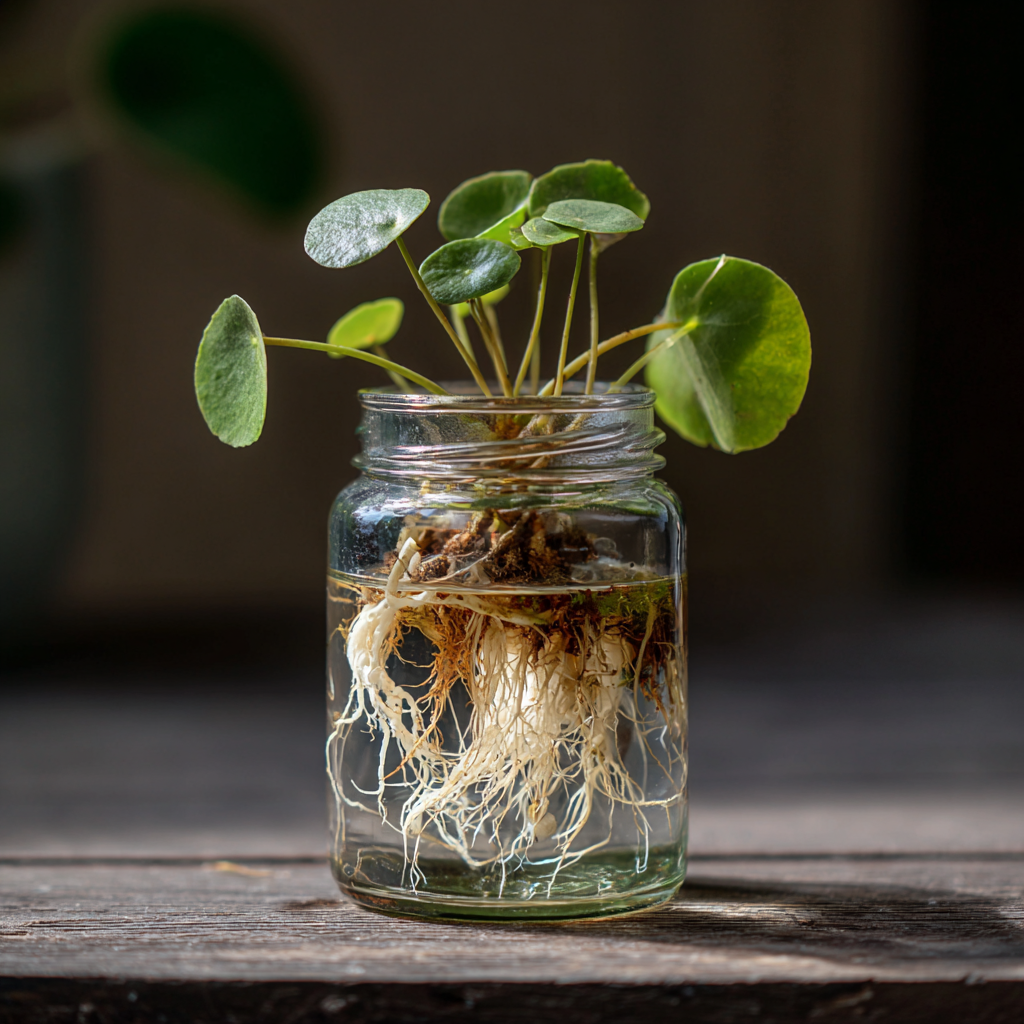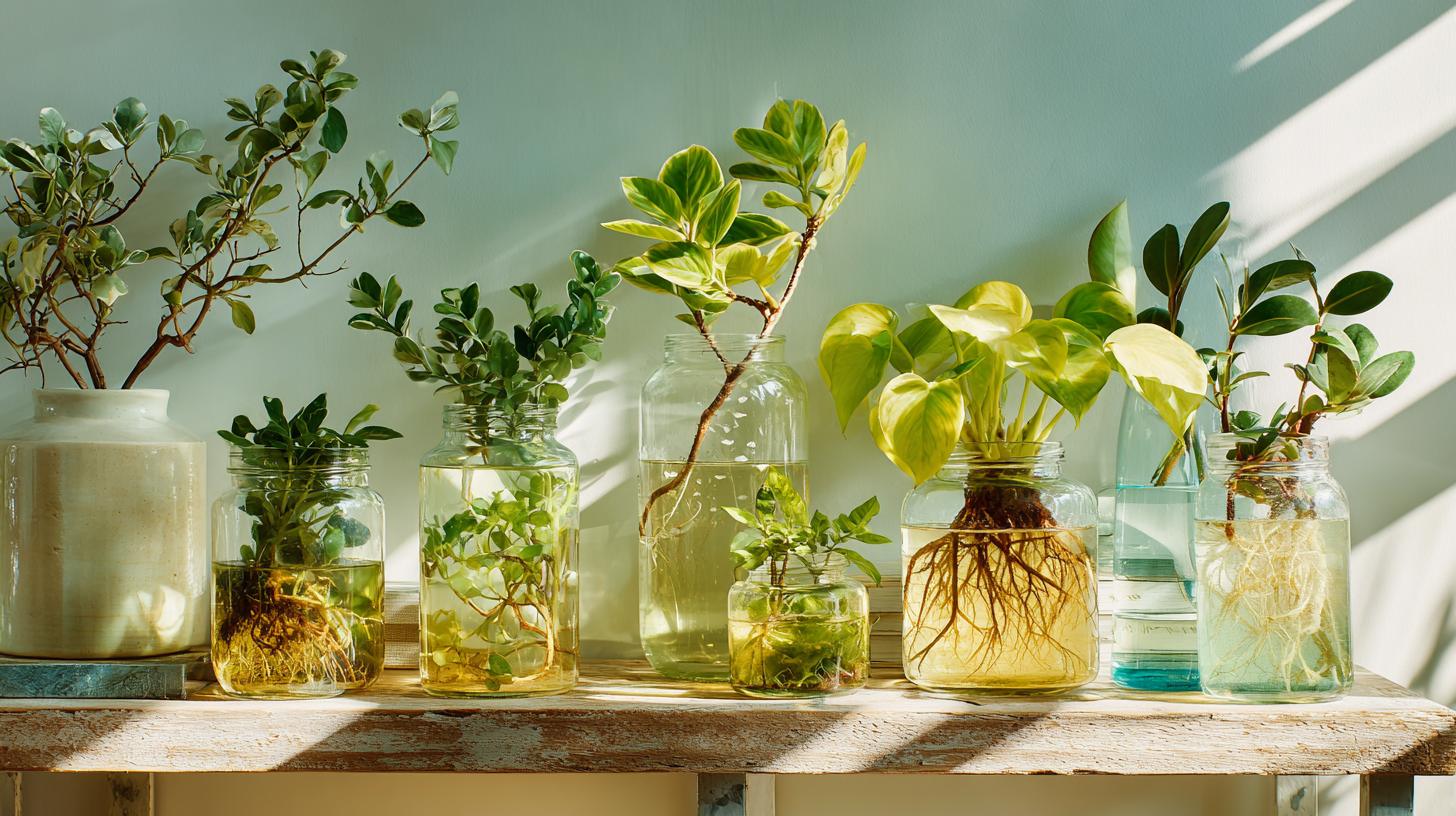Free Propagation Station Setup Checklist
Get our complete checklist to set up your first propagation station with confidence.
Download Free GuidePlant propagation might seem intimidating, but it's one of the most rewarding skills any plant parent can learn. Whether you want to expand your collection without breaking the bank or share your beloved plants with friends, propagation opens up a world of possibilities.
What is Plant Propagation?
Plant propagation is the process of creating new plants from existing ones. It's nature's way of reproduction, and humans have been harnessing these natural processes for thousands of years. For indoor plant enthusiasts, propagation means turning one plant into many – completely free!
There are several methods of propagation, but for beginners, we'll focus on the most accessible and successful techniques that work well for common houseplants.
The Main Propagation Methods
1. Water Propagation
The most beginner-friendly method! Simply place a cutting in water and watch roots develop. Perfect for pothos, philodendrons, tradescantia, and many others.
2. Soil Propagation
Plant cuttings directly into moist potting mix. This method works well for succulents, rubber trees, and plants that prefer to develop roots in their final growing medium.
3. Division
Separate a plant that naturally grows in clusters or has multiple growing points. Snake plants, ZZ plants, and spider plants are perfect for this method.

Essential Tools for Success
- Clean, sharp scissors or pruning shears - Clean cuts prevent infection
- Glass jars or containers - Clear containers let you monitor root development
- Rooting hormone (optional) - Speeds up root development for challenging plants
- High-quality potting mix - For soil propagation and transplanting
- Small pots - For transitioning rooted cuttings to soil
Step-by-Step Water Propagation
- Choose your cutting: Select a healthy stem with at least 4-6 leaves and visible nodes (small bumps where roots will grow).
- Make the cut: Cut just below a node at a 45-degree angle using clean, sharp tools.
- Remove lower leaves: Strip leaves from the bottom 2-3 inches to prevent rot.
- Place in water: Put the cutting in a clean glass jar with fresh water covering the nodes.
- Find the right spot: Place in bright, indirect light away from direct sun.
- Change water regularly: Refresh every 3-5 days to prevent bacteria buildup.
- Wait for roots: Most plants develop roots within 2-6 weeks.
- Transplant: Once roots are 2-3 inches long, carefully transplant to soil.
Common Beginner Mistakes to Avoid
❌ What NOT to Do:
- Using dirty tools (leads to infection)
- Placing cuttings in direct sunlight (causes stress)
- Forgetting to change the water (causes root rot)
- Taking cuttings from unhealthy plants
- Being impatient and checking roots constantly
✅ Success Tips:
- Take cuttings in spring or early summer when plants are actively growing
- Choose mature, healthy stems with visible nodes
- Use filtered or distilled water for sensitive plants
- Be patient – some plants take longer than others
- Keep a propagation journal to track your success
Best Plants for Beginners
Start your propagation journey with these nearly foolproof plants:
Super Easy (95% success rate)
- • Pothos (all varieties)
- • Tradescantia (inch plant)
- • Philodendron heartleaf
- • Spider plant babies
Easy (80% success rate)
- • Monstera deliciosa
- • Rubber tree (Ficus elastica)
- • ZZ plant (division)
- • Snake plant (division)
Troubleshooting Common Issues
Cutting is wilting
Move to less light, ensure water covers nodes, mist leaves lightly
Water turning cloudy/smelly
Change water immediately, clean container, trim any rotting parts
No roots after 4+ weeks
Try rooting hormone, ensure warm location, check for nodes on cutting
Your Propagation Journey Starts Now
Plant propagation is incredibly rewarding, both for your wallet and your plant parent confidence. Start with one easy plant, follow these guidelines, and soon you'll have new plants to enjoy, gift, or trade with fellow plant enthusiasts.
Remember, every expert was once a beginner. Your first few attempts might not go perfectly, and that's completely normal! Each cutting teaches you something new about plants and their amazing ability to regenerate.
Ready to Start Your Plant Collection?
Join Nurturnal to track your propagation progress, connect with other plant parents, and discover your next favorite plant through our community.
Join Our Plant Community